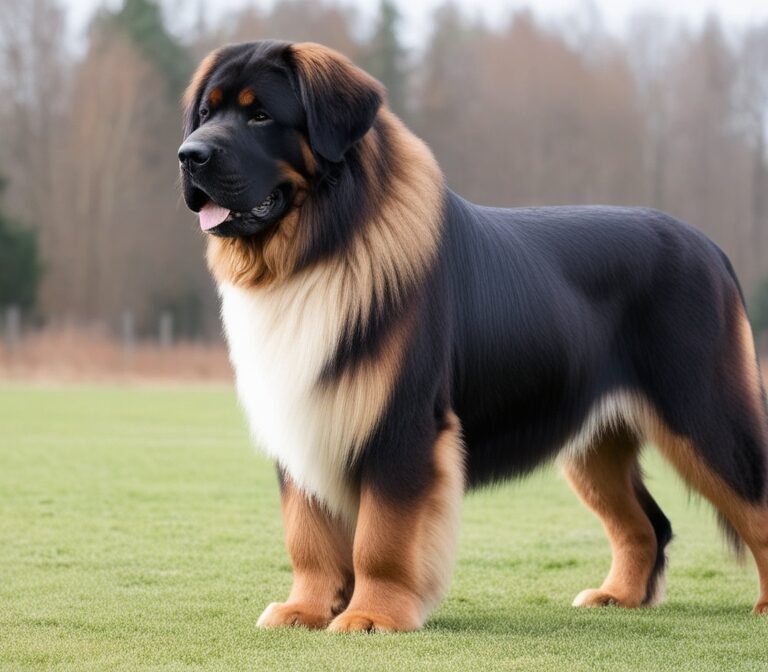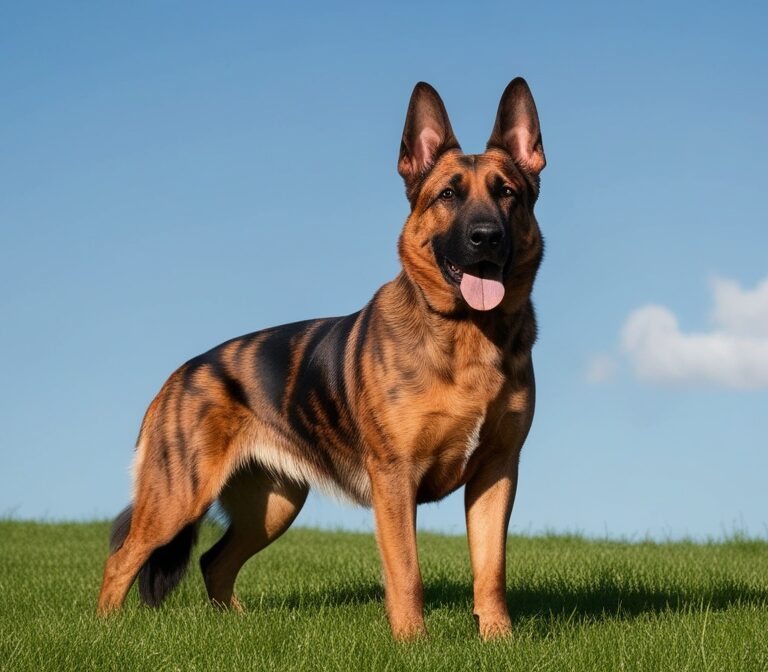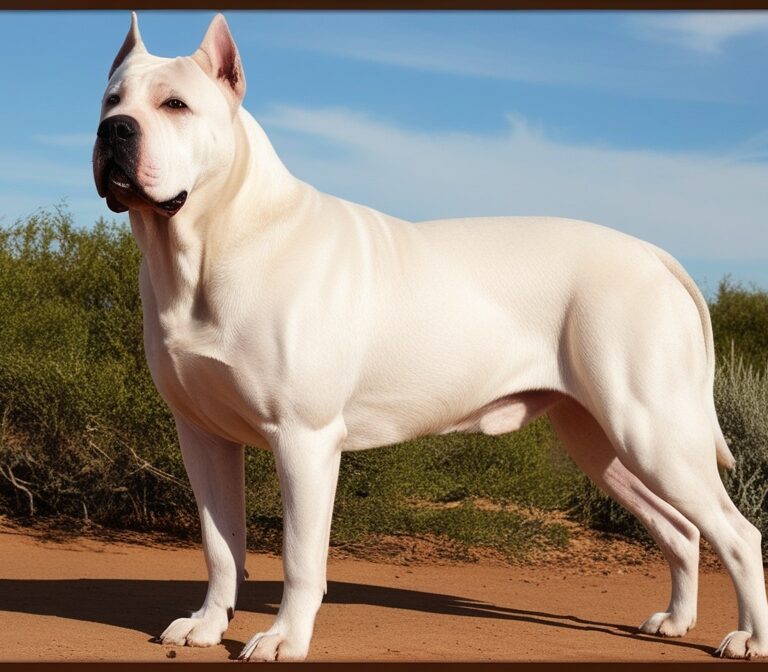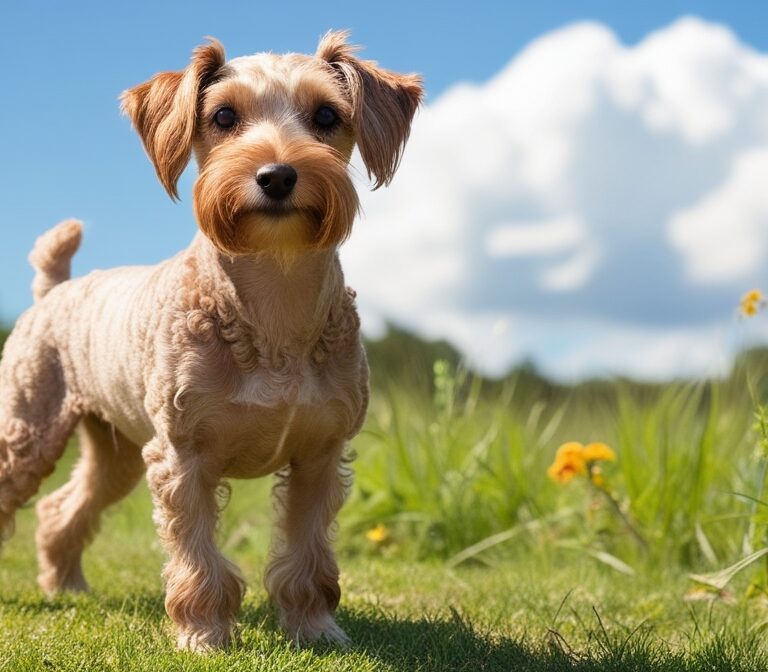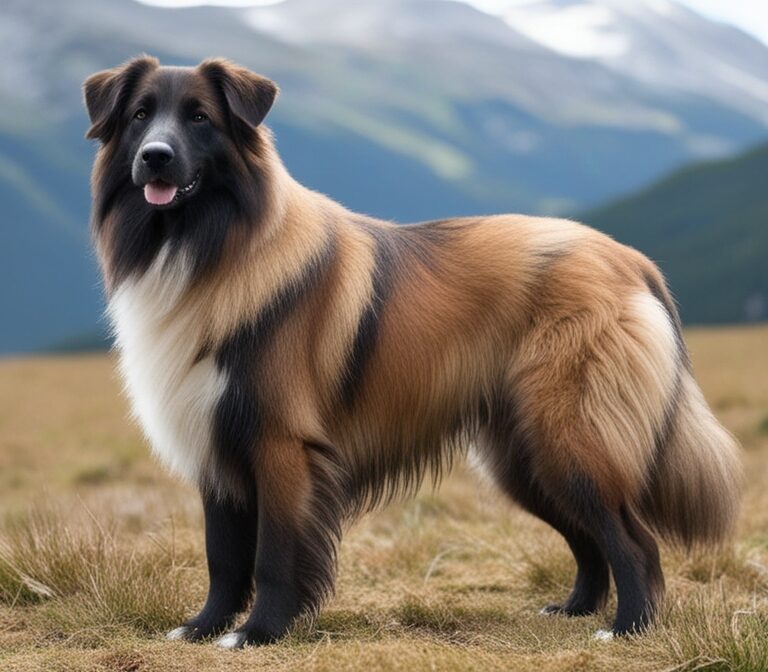Greater Swiss Mountain Dog: The Gentle Giant of the Canine World
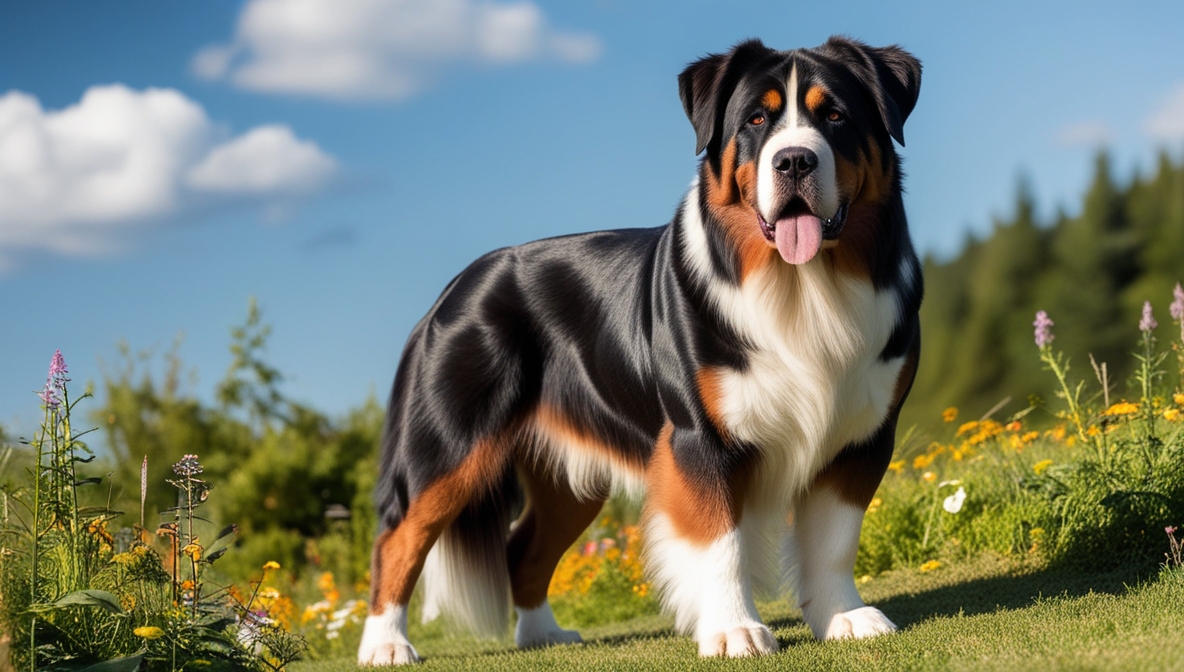
Introduction
The Greater Swiss Mountain Dog is often described as one of the most impressive and affectionate large breeds in the world. Known for its striking tricolor coat, towering size, and warm personality, this dog has long been admired as both a working breed and a beloved companion. Affectionately called the “Swissy,” the Greater Swiss Mountain Dog is sometimes referred to as the gentle giant of the canine world, and for good reason. Despite its powerful frame and history as a farm and guard dog, the Swissy is affectionate, loyal, and deeply devoted to its family.
This breed has roots that trace back centuries, originating in the Swiss Alps where it worked tirelessly alongside farmers and herders. Over time, the Greater Swiss Mountain Dog has transitioned from being a utilitarian farm dog to a cherished family pet and show dog. Yet it has never lost the resilience, strength, and courage that defined its early history. For anyone interested in learning more about this remarkable breed, it is important to explore its origins, personality, physical traits, training needs, and overall care requirements. The Greater Swiss Mountain Dog is a unique combination of might and gentleness, making it a breed like no other.
The History of the Greater Swiss Mountain Dog
The Greater Swiss Mountain Dog is considered the oldest and largest of the four Swiss mountain breeds, which also include the Bernese Mountain Dog, the Appenzeller, and the Entlebucher. Its origins go back more than 2,000 years when Roman armies traveled through Europe accompanied by large mastiff-type dogs. These dogs interbred with local working and herding dogs in Switzerland, resulting in the sturdy, versatile breed we now know as the Swissy.
In its early history, the Greater Swiss Mountain Dog played a vital role in the survival of rural Swiss communities. Life in the Alps was demanding, and families relied heavily on their dogs for daily labor. Swissies pulled carts loaded with milk, cheese, and firewood, assisted with herding livestock, and acted as vigilant guardians of both home and farm. Their incredible endurance and strength allowed them to work from dawn until dusk in rugged, cold conditions that would challenge even the hardiest of breeds.
By the 19th century, however, the breed’s numbers began to decline as industrialization and mechanized farming replaced traditional practices. The advent of rail transport and machinery reduced the need for cart-pulling dogs, and the Greater Swiss Mountain Dog faced near extinction. The breed was revived in the early 1900s thanks to Professor Albert Heim, a Swiss canine expert who recognized the value of preserving native breeds. His advocacy, along with the efforts of dedicated breeders, saved the Greater Swiss Mountain Dog from vanishing entirely.
Today, the breed is recognized by kennel clubs worldwide, including the American Kennel Club, which granted official recognition in 1995. While still relatively rare compared to its cousin the Bernese Mountain Dog, the Greater Swiss Mountain Dog continues to grow in popularity among families and working dog enthusiasts.
Physical Characteristics of the Greater Swiss Mountain Dog
The Greater Swiss Mountain Dog is an unmistakable presence due to its size and striking appearance. Males typically stand between 25.5 and 28.5 inches tall at the shoulder and weigh between 105 and 140 pounds, while females are slightly smaller, ranging from 23.5 to 27 inches in height and weighing between 85 and 110 pounds. Despite their size, they move with a surprising grace and agility, reflecting their working heritage.
The coat of the Greater Swiss Mountain Dog is short, dense, and double-layered, designed to protect against cold weather. Its tricolor pattern is one of the breed’s most defining traits, featuring a black base with rust and white markings. The rust usually appears above the eyes, on the cheeks, and on the legs, while the white is commonly found on the muzzle, chest, and feet. This symmetrical pattern gives the dog an elegant, dignified appearance.
Their eyes are dark brown and almond-shaped, conveying warmth and intelligence. The head is broad and strong, with a powerful jaw, while the chest is deep and muscular. All of these features emphasize the breed’s origins as a hardworking farm dog built for endurance and resilience.
Temperament and Personality
One of the most remarkable aspects of the Greater Swiss Mountain Dog is its personality. Despite its large size and strong presence, the Swissy is best known for its gentle, affectionate, and family-oriented nature. It is a breed that thrives on companionship and forms deep, lasting bonds with its owners.
The Greater Swiss Mountain Dog is naturally protective, making it an excellent watchdog. It will bark to alert its family of strangers but is not overly aggressive. Its deep, booming bark alone is often enough to discourage intruders. Once properly introduced, the breed is usually friendly and welcoming to guests, showing its balanced nature as both a protector and companion.
With children, the Swissy demonstrates patience and tolerance. Its sturdy build makes it a reliable playmate for kids, though supervision is always recommended due to its size and strength. Owners often describe their Greater Swiss Mountain Dogs as “shadows” because they love following family members around the house, always wanting to be close.
When properly socialized, the breed also gets along well with other pets, including dogs and even cats. Its herding and guarding instincts may occasionally surface, but with consistent training and social exposure, these instincts can be managed effectively.
Training the Greater Swiss Mountain Dog
The Greater Swiss Mountain Dog is an intelligent breed, but it can sometimes display a stubborn streak. Training requires patience, consistency, and a positive approach. Early training is particularly important because of the breed’s size; an untrained Swissy can be difficult to manage as an adult.
Puppy training should begin as soon as the dog comes home. Basic commands like sit, stay, come, and heel are essential, and leash training should be prioritized. Socialization is equally crucial. Introducing the puppy to different environments, people, and animals helps prevent shyness or excessive wariness later in life.
The Swissy responds best to positive reinforcement methods such as praise, treats, and play. Harsh corrections or punishment tend to backfire, as this sensitive breed can become uncooperative when handled roughly. Short, engaging training sessions are more effective than long, repetitive ones.
Because of its natural guarding instincts, the breed may be cautious around strangers. Training should emphasize controlled exposure to new situations and teaching the dog how to respond calmly. With patience and consistency, the Greater Swiss Mountain Dog becomes a well-mannered and dependable companion.
Exercise and Activity Needs
Although the Greater Swiss Mountain Dog is not as hyperactive as some working breeds, it still requires daily exercise to maintain health and happiness. This is a large, muscular dog that benefits from both physical and mental stimulation.
Two daily walks of at least 30 to 45 minutes each are recommended. These dogs enjoy outdoor activities, particularly in cooler weather. They make excellent hiking companions, capable of keeping up on long treks thanks to their endurance. Playtime in a yard or park also provides opportunities for exercise and bonding.
One of the most unique activities for the Swissy is cart pulling, also known as drafting. This not only taps into the breed’s historical purpose but also gives the dog a productive outlet for its strength. Many breed clubs even host drafting competitions, where Swissies can showcase their working abilities.
Owners should be cautious during puppyhood, however. Excessive exercise before the dog’s joints are fully developed can lead to orthopedic issues. Moderate, age-appropriate activity is best for young Swissies until they reach maturity.
Health and Lifespan
Like many large breeds, the Greater Swiss Mountain Dog has a shorter lifespan compared to smaller dogs, averaging between 8 and 11 years. While generally hardy, the breed is prone to certain health concerns that potential owners should be aware of.
Hip and elbow dysplasia are common in large breeds and can affect Swissies as well. This genetic condition involves improper joint development and can lead to pain or arthritis. Responsible breeders screen for these conditions to reduce the risk in puppies. Another concern is gastric torsion, commonly known as bloat, which can be life-threatening. Feeding smaller, more frequent meals and avoiding vigorous exercise immediately after eating can help lower the risk.
Other health issues seen in the breed include osteochondritis dissecans, a joint disorder affecting growing dogs, and epilepsy, which can cause seizures in some individuals. Regular veterinary checkups, a balanced diet, and careful monitoring are essential for maintaining the health of a Greater Swiss Mountain Dog.
Grooming and Maintenance
The Greater Swiss Mountain Dog is relatively low-maintenance when it comes to grooming. Its short double coat requires brushing once or twice a week to remove loose hair and maintain its glossy appearance. The breed sheds moderately year-round and more heavily during seasonal changes.
Bathing is only necessary every few months unless the dog becomes particularly dirty. Because their coat naturally repels dirt and moisture, Swissies often stay cleaner than expected for such large outdoor-loving dogs. Nail trimming should be done regularly to prevent discomfort, and dental hygiene is equally important. Brushing the dog’s teeth several times a week and providing dental chews can help maintain oral health.
Nutrition and Feeding
Proper nutrition plays a vital role in supporting the health and longevity of the Greater Swiss Mountain Dog. A diet rich in protein helps maintain muscle mass, while supplements such as glucosamine and chondroitin may support joint health. Omega-3 fatty acids are beneficial for skin and coat condition.
Because of the risk of bloat, it is recommended to divide meals into two portions per day rather than offering one large meal. Fresh water should always be available, and portion control is essential to prevent obesity, which can place extra strain on joints. Consulting a veterinarian for tailored dietary advice ensures that the dog receives appropriate nutrition based on age, weight, and activity level.
Living with a Greater Swiss Mountain Dog
Owning a Greater Swiss Mountain Dog is a rewarding but demanding experience. These dogs are not well-suited to apartment living unless the owner is highly committed to daily exercise. Ideally, they thrive in homes with secure yards where they have room to move freely.
Climate is also a consideration. Swissies are built for cooler environments and may struggle in hot, humid weather. Owners in warmer climates must take precautions such as limiting exercise during peak heat, providing shade, and ensuring access to fresh water.
Most importantly, the Greater Swiss Mountain Dog needs to feel like part of the family. This is not a breed that can be left outside alone for long periods. They want to be included in daily activities and enjoy being by their owner’s side, whether indoors or outdoors.
Comparison with Similar Breeds
When choosing a large working breed, it helps to compare the Greater Swiss Mountain Dog with other breeds. The Bernese Mountain Dog, for instance, is closely related but has a longer, more high-maintenance coat and a slightly shorter lifespan. The Saint Bernard shares the Swissy’s gentle nature but tends to drool more and grows even larger. Newfoundlands are also affectionate giants but are natural swimmers, whereas Swissies are not known for strong swimming abilities.
These comparisons highlight the unique balance the Greater Swiss Mountain Dog offers. It combines the size and strength of a working dog with the relatively low grooming needs of a short coat, making it appealing to families who want a large, loyal companion without the extra coat maintenance.
Why Choose a Greater Swiss Mountain Dog
There are countless reasons why families fall in love with the Greater Swiss Mountain Dog. Its loyalty, protective instincts, and affectionate nature make it an ideal family companion. The breed is patient with children, adaptable to various lifestyles, and deeply devoted to its people. Its relatively low-maintenance grooming compared to other giant breeds is another advantage.
At the same time, potential owners should weigh the challenges. Swissies require consistent training, a fair amount of exercise, and careful attention to health risks. Their shorter lifespan can also be difficult for families who become deeply attached. However, for those willing to meet their needs, the rewards of living with a Greater Swiss Mountain Dog are immeasurable.
Conclusion
The Greater Swiss Mountain Dog is more than just a large and beautiful breed. It is a loyal protector, a devoted family member, and a living piece of Swiss history. From its early days as a farm dog pulling carts and guarding livestock to its role today as a beloved companion, the Swissy has proven itself time and again as a dog of remarkable strength, resilience, and heart.
For families who value loyalty, affection, and companionship in a large breed, the Greater Swiss Mountain Dog is truly the gentle giant of the canine world. Owning one requires commitment, but the love and devotion they return make every effort worthwhile. Whether relaxing at home, exploring the outdoors, or simply lying by your side, the Greater Swiss Mountain Dog enriches the lives of those lucky enough to share their journey with this magnificent breed.
